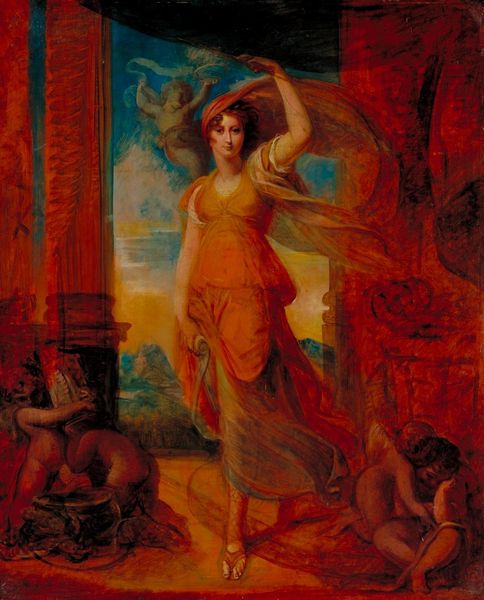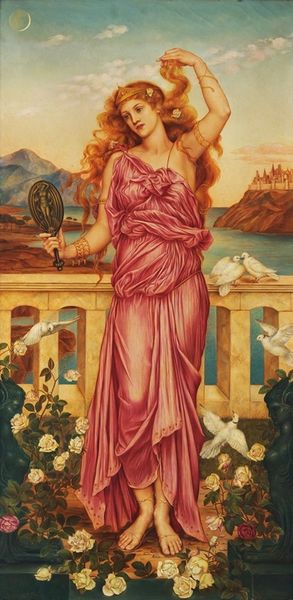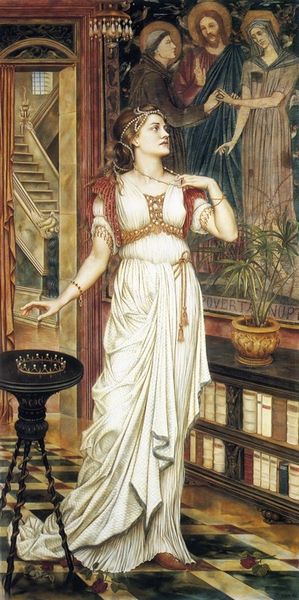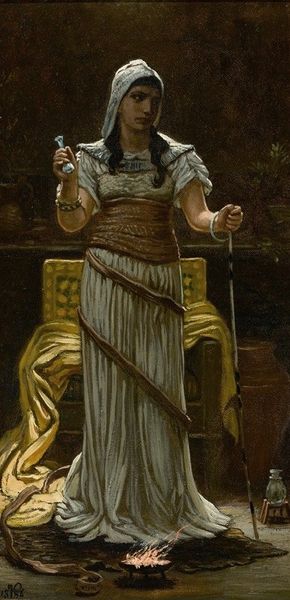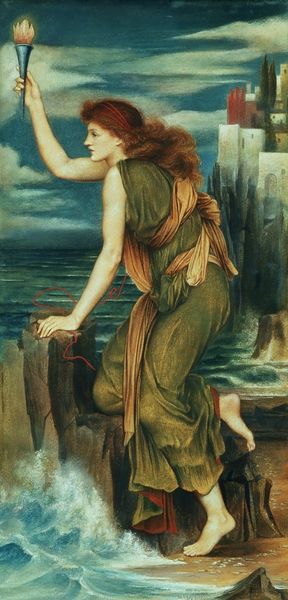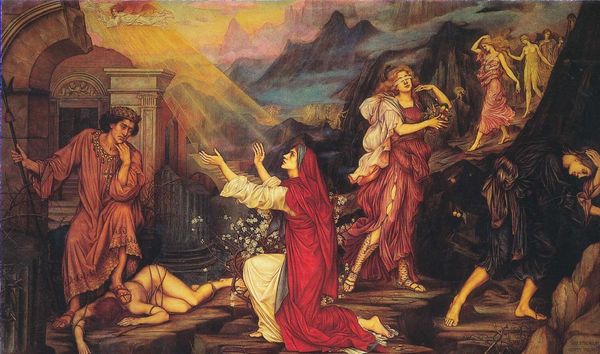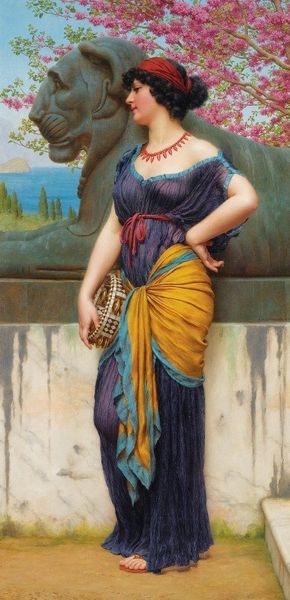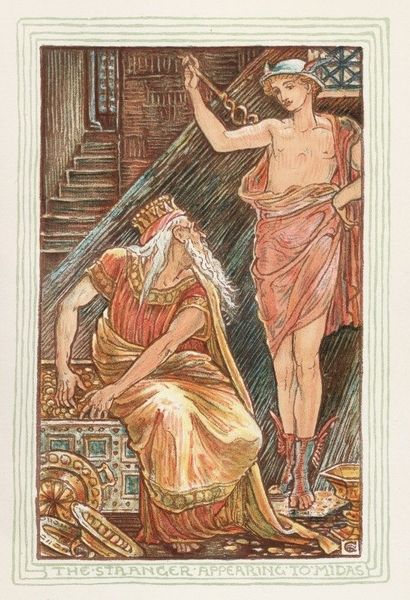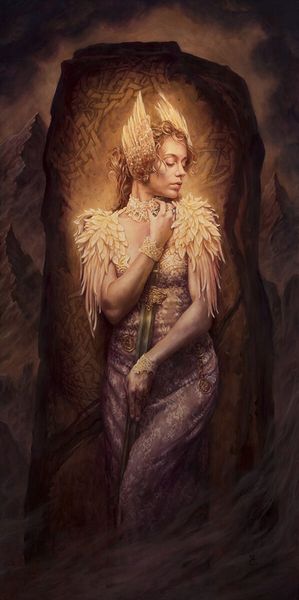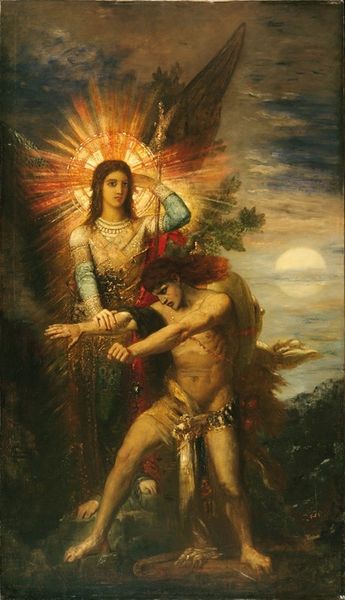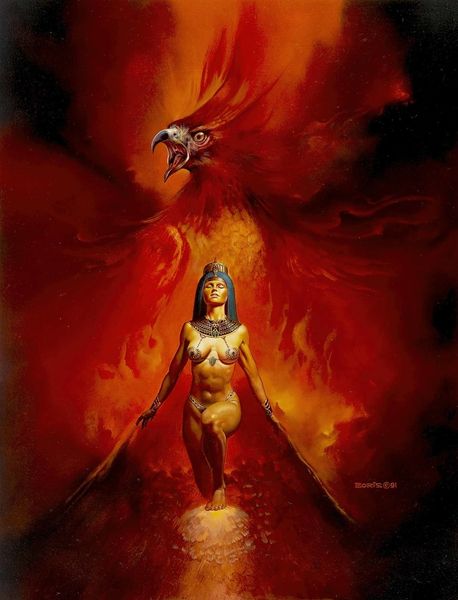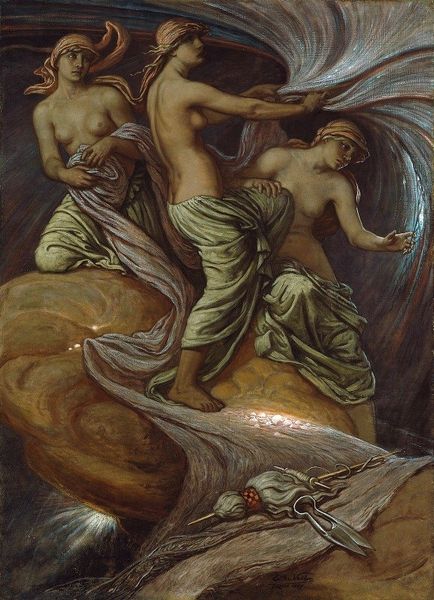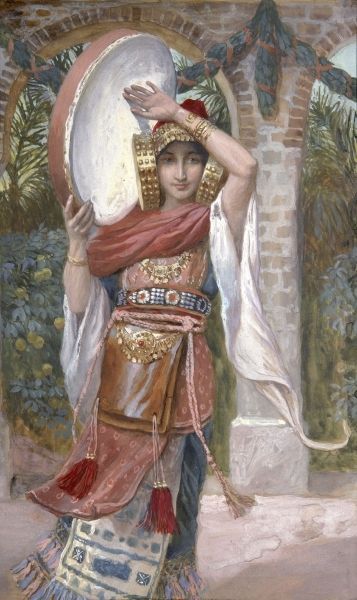
Copyright: Public Domain: Artvee
Editor: This is Evelyn De Morgan's "Cassandra," painted in 1898 using oil paints. What immediately strikes me is the sheer drama of it all— the fiery background, her dishevelled hair... it feels like a moment of intense revelation or perhaps despair. What do you see in this piece? Curator: It sings of foresight and futility, doesn't it? De Morgan, bless her artistic heart, has bottled Cassandra's tragic curse right there on the canvas. Apollo granted her the gift of prophecy, but when she refused his advances, he cursed her so no one would ever believe her. A gift turned poison! Do you notice how she’s framed by both roses and ruin? Editor: Yes! The roses seem almost… hopeful, even amidst the burning city. Curator: Indeed! Perhaps De Morgan wanted to explore the duality of Cassandra’s fate: beauty and horror interwoven. The colors themselves – the cool blues of her dress against the fiery oranges – create that visual tension. Do you get a sense of pre-Raphaelite influence with its Romantic themes? Editor: Definitely. The flowing robes, the dramatic subject matter, the attention to detail... it's all there. Is the artist making any statements by choosing Cassandra as a subject, or about the curse itself? Curator: Now, that's a thought isn't it! Perhaps De Morgan saw something of herself in Cassandra. A woman with vision, struggling to be heard in a world that wasn’t ready to listen. What do you think about how the composition might highlight her tragic circumstance? Editor: Seeing the ruins gives a sense of inevitability and of destiny. But with such care put into details as small as her toes, she seems relatable rather than ethereal, despite being a figure of mythology. Curator: I see her now not as a goddess, but more as a mirror to our own human frailties, and what it means to be a prophet unlistened to. Well, I certainly feel I've peered deeper into De Morgan's tragic mirror. Thank you for shining light on those smaller, more poignant details. Editor: Thanks! I am glad you shared the symbolism that makes art much more intricate and expressive.
Comments
No comments
Be the first to comment and join the conversation on the ultimate creative platform.
